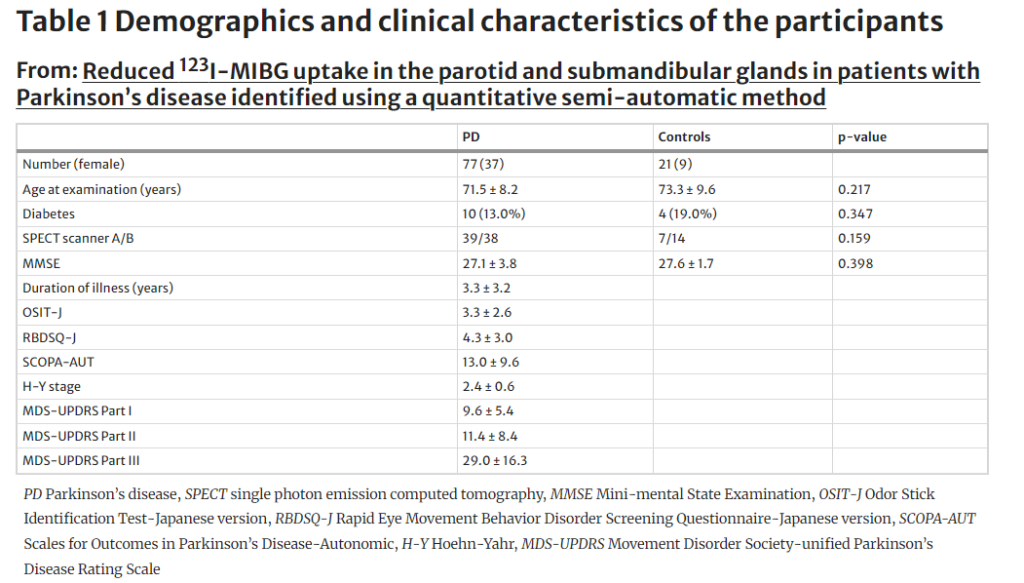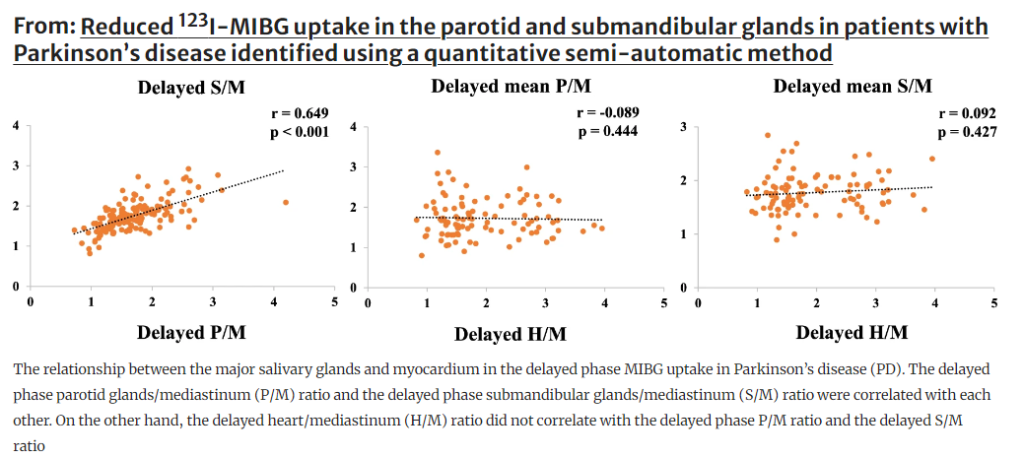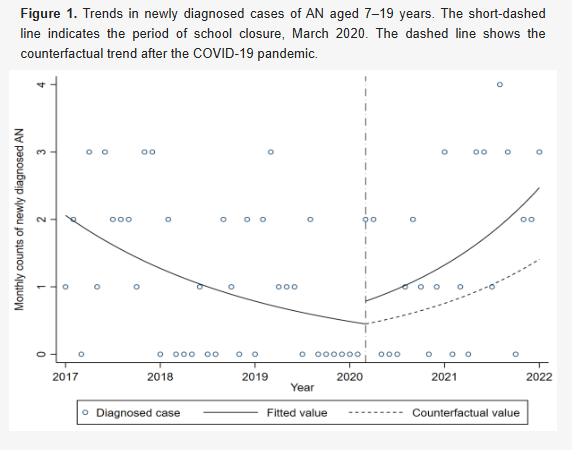June 16, 2023
Parotid and submandibular gland sympathetic denervation in Parkinson's disease: Development of a novel analytical method to elucidate the pathophysiology of Parkinson's disease




Key points:
- Parotid and submandibular gland sympathetic denervationy was studied in Parkinson’s disease.
- Evaluation of the major salivary gland 123I-metaiodobenzylguanidine (MIBG) collection using quantitative semi-automated analysis methods, allowing for data homogeneity (Figure 1).
- There are many unknowns about the process of Parkinson’s disease progression in peripheral organs, and this study may help to elucidate them.


Figure 1. Chest and head planar images using a quantitative semi-automatic method.
Summary:
Parkinson’s disease (PD) is a neurodegenerative disorder associated with motor disturbances related to dopaminergic dysfunction but it also has a variety of non-motor symptoms such as autonomic dysfunction. 123I- metaiodobenzylguanidine (MIBG) myocardial scintigraphy (Note 2) is available in Japan as an adjunctive diagnostic method for PD, and it is known that PD and other Lewy body diseases present with cardiac sympathetic denervation. On the other hand, Lewy bodies have been found in peripheral organs such as the major salivary glands and other gastrointestinal tracts and skin, in addition to the heart, but it is unclear at what time the lesions begin to develop. Therefore, the research group adapted the MIBG cardiac scintigraphy examination to test the major salivary glands (parotid and submandibular), where Lewy bodies predominate in the head and neck region, using a new quantitative semi-automated analysis method. Comparing the PD group with the control group, MIBG uptake was significantly lower in the PD group in the early and delayed parotid and delayed submandibular gland images (Table 1). There was no correlation between cardiac and major salivary gland MIBG uptake (Figure 2), which was thought to be due to differences in the degree of neurodegeneration. The results of this research will add a new dimension to our understanding of the pathological progression of PD and may help to elucidate the pathogenesis of the disease.
Parkinson’s disease (PD) is a neurodegenerative disorder associated with motor disturbances related to dopaminergic dysfunction but it also has a variety of non-motor symptoms such as autonomic dysfunction. 123I- metaiodobenzylguanidine (MIBG) myocardial scintigraphy (Note 2) is available in Japan as an adjunctive diagnostic method for PD, and it is known that PD and other Lewy body diseases present with cardiac sympathetic denervation. On the other hand, Lewy bodies have been found in peripheral organs such as the major salivary glands and other gastrointestinal tracts and skin, in addition to the heart, but it is unclear at what time the lesions begin to develop. Therefore, the research group adapted the MIBG cardiac scintigraphy examination to test the major salivary glands (parotid and submandibular), where Lewy bodies predominate in the head and neck region, using a new quantitative semi-automated analysis method. Comparing the PD group with the control group, MIBG uptake was significantly lower in the PD group in the early and delayed parotid and delayed submandibular gland images (Table 1). There was no correlation between cardiac and major salivary gland MIBG uptake (Figure 2), which was thought to be due to differences in the degree of neurodegeneration. The results of this research will add a new dimension to our understanding of the pathological progression of PD and may help to elucidate the pathogenesis of the disease.




Journal:
Journal of Neurology Online issue, May 24 2023
Title:
Reduced 123I-MIBG uptake in the parotid and submandibular glands in patients with Parkinson’s disease identified using a quantitative semi-automatic method
Authors:
Ebina J, Mizumura S, Ishii N, Kobayashi Y, Shibukawa M, Morioka H, Nagasawa J, Yanagihashi M, Hirayama T, Kawabe K, Orimo S, *Kano O.
DOI:
10.1007/s00415-023-11770-7
Journal of Neurology Online issue, May 24 2023
Title:
Reduced 123I-MIBG uptake in the parotid and submandibular glands in patients with Parkinson’s disease identified using a quantitative semi-automatic method
Authors:
Ebina J, Mizumura S, Ishii N, Kobayashi Y, Shibukawa M, Morioka H, Nagasawa J, Yanagihashi M, Hirayama T, Kawabe K, Orimo S, *Kano O.
DOI:
10.1007/s00415-023-11770-7
READ MORE RESEARCH NEWS - MEDICINE
ACADEMICS
Undergraduate Programs
– Medicine
– Pharmaceutical Sciences
– Science
– Nursing
– Health Science
Graduate Programs
–Medicine
–Pharmaceutical Sciences
–Science
–Nursing
Undergraduate Programs
– Medicine
– Pharmaceutical Sciences
– Science
– Nursing
– Health Science
Graduate Programs
–Medicine
–Pharmaceutical Sciences
–Science
–Nursing
RESEARCH
– News
– Guidelines & Policies
– Support Offices
– Facilities
– Security Export Control
Non-Degree Programs
– Clinical Elective Program
– International Physician Observership Program




